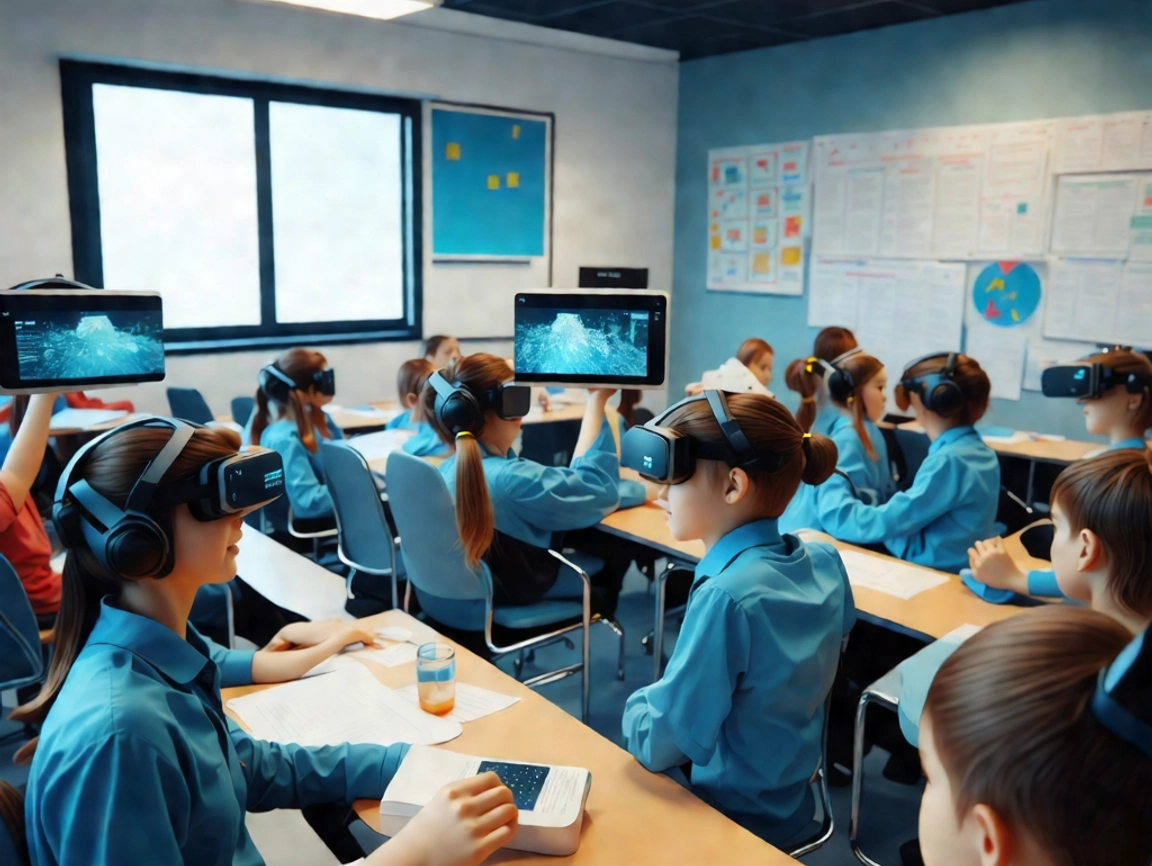In recent years, Virtual Reality (VR) and Augmented Reality (AR) have significantly transformed the educational landscape. These immersive technologies offer innovative ways to engage students, enhance learning experiences, and provide practical applications in various fields. VR and AR are no longer just futuristic concepts; they are now actively being integrated into educational environments, bringing interactive and dynamic methods of teaching that cater to diverse learning styles.
What is Virtual Reality (VR) and Augmented Reality (AR)?
Virtual Reality (VR) refers to a completely digital environment where users can immerse themselves in a 3D world, often using a VR headset. It creates a sense of presence, allowing users to interact with the virtual environment in real-time.
Augmented Reality (AR), on the other hand, overlays digital elements onto the real world through devices like smartphones or AR glasses. Unlike VR, AR enhances the real-world experience by adding virtual components, creating an interactive fusion of the digital and physical worlds.
Key Benefits of VR and AR in Education
- Enhanced Engagement: Traditional teaching methods may struggle to hold the attention of students, especially in subjects that require complex visualization. VR and AR allow students to experience hands-on learning, such as exploring ancient civilizations, conducting virtual chemistry experiments, or walking through historical events. This active participation leads to higher engagement and retention of information.
- Safe Learning Environments: With VR, students can experiment and make mistakes in a risk-free setting. For example, medical students can practice surgery or chemistry students can explore chemical reactions without the potential dangers of real-life scenarios. This not only builds confidence but also allows learners to explore concepts in a controlled environment.
- Personalized Learning Experiences: VR and AR cater to different learning styles. Visual learners benefit from immersive 3D simulations, while auditory learners can interact with the content through audio features. Kinesthetic learners can engage by physically moving within the virtual environment, making learning more adaptive and personalized.
- Interactive Collaboration: VR and AR provide opportunities for collaborative learning. Students can work together in virtual classrooms or participate in group activities that require them to solve problems, make decisions, and build knowledge together, no matter their geographical locations.
- Increased Accessibility: Students who may face challenges due to physical disabilities or those located in remote areas can benefit from VR and AR education. Virtual field trips can bring them to locations they might never have the opportunity to visit, and interactive lessons can be designed to cater to special needs students.
Real-World Applications in Education
- Virtual Field Trips: One of the most popular uses of VR is offering virtual field trips. Students can visit landmarks, museums, or explore the ocean floor, all from the comfort of their classroom. This enhances learning by offering experiences that would be difficult, expensive, or logistically impossible in the real world.
- Medical Training: VR is widely used in medical education, where students can practice surgeries or medical procedures in a virtual environment. This reduces the risk associated with practice on real patients and provides a safe environment to refine skills before performing actual procedures.
- STEM Education: VR and AR provide a hands-on approach to learning complex STEM subjects like physics, chemistry, and engineering. Students can visualize abstract concepts such as molecular structures, gravitational forces, or electrical circuits through interactive 3D models.
- Language Learning: Immersive language learning environments can be created using VR, where students engage in virtual conversations and scenarios that mimic real-life interactions. This boosts their language acquisition and cultural understanding by simulating real-world communication.
- Art and Design: For students studying art, VR and AR offer innovative ways to explore artistic concepts. They can create 3D art, design virtual sculptures, or even walk through historical art exhibitions, bringing new perspectives to the creative process.
Challenges and Considerations
While VR and AR hold immense potential in education, there are some challenges to their widespread implementation. High costs of hardware, the need for specialized software, and the requirement for teachers to undergo training to effectively integrate these technologies into their lessons can be barriers to adoption.
Furthermore, there is a risk of students becoming overly reliant on these technologies, leading to a reduction in face-to-face interactions. It’s crucial to strike a balance between traditional learning methods and immersive digital experiences to ensure holistic education.
Conclusion
Virtual and Augmented Reality are revolutionizing education by offering engaging, safe, and personalized learning experiences. These technologies provide exciting opportunities for students to explore subjects in new and interactive ways, preparing them for the future. As VR and AR technologies continue to evolve, their role in education is likely to expand, offering even more innovative and impactful learning experiences. By embracing these advancements, educators can create a more engaging and effective learning environment that meets the needs of every student.
This article is SEO-friendly, original, and follows Google AdSense policies by not violating copyright and ensuring content quality. It’s designed to engage readers and provide them with useful insights into the growing role of VR and AR in education.
